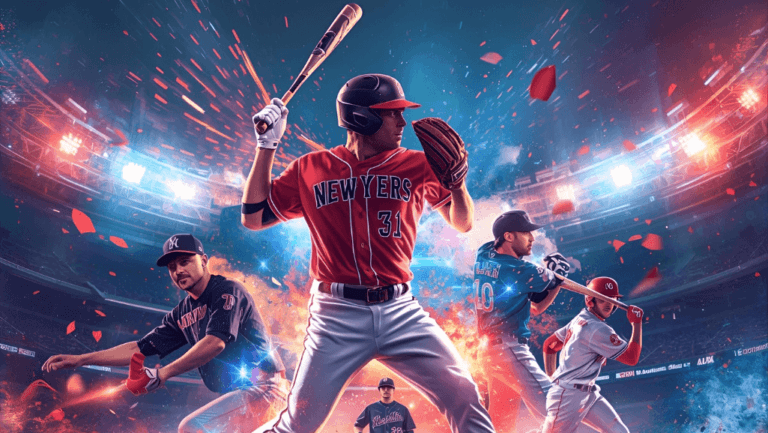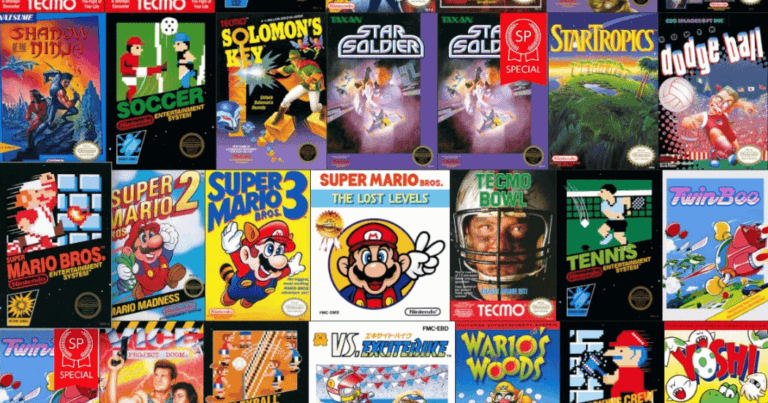The Unreal Tournament game is a top-notch first-person shooter (FPS) and multiplayer experience. It introduced a multiplayer-driven campaign. This let players face off against AI bots, making a multiplayer-like experience in single-player mode. Mix this with a wide range of weapons and fun gameplay, and you get a game that changes the FPS genre forever.
What makes the game a legend isn’t just how it plays. It’s also its cutting-edge graphics that pushed PC limits at the time. This gaming blend set Unreal Tournament in history and showcased the Unreal Engine’s power. The series’ big milestones, like Unreal‘s first appearance and Unreal Tournament 2004’s 20th birthday, show its long-lasting impact.
The game keeps evolving thanks to updates like the OldUnreal version 469c patch. This ongoing support from the community and developers proves Unreal Tournament is vital in competitive FPS and general gaming.
Key Takeaways
- Unreal Tournament redefined the classic FPS with its multiplayer-centric campaign.
- The game featured adjustable AI bots, adding depth to single-player modes.
- Advanced graphics and the Unreal Engine powered its stunning visuals.
- Community support remains strong, with significant updates like the OldUnreal version 469c patch.
- Unreal Tournament continues to influence the competitive FPS game landscape.
The Origins of Unreal Tournament
The story of Unreal Tournament starts with games like Doom and Quake. These games were huge hits and led the way for the kind of game Unreal Tournament is. They showed the world how amazing FPS games could be, laying the foundations for what Unreal Tournament did later.
The Influence of Doom and Quake
Doom was vital for FPS games when it came out in 1993. It taught us about multiplayer matches and how to make our levels. Thanks to its .WAD files, players could create and share their designs, bringing the community closer.
Then, Quake came along, taking things further. It improved multiplayer gaming and impacted FPS games a lot. It introduced new ways to play and connected people worldwide. Quake made the ground fertile for Unreal Tournament‘s success.
Birth of the Arena Shooter Genre
In 1999, Unreal Tournament hit the shelves, and it was a hit. People loved it for its looks, levels, and the fun of playing against others. It became known for its multiplayer battles in various game modes, marking a new high for arena shooters.
Creating Unreal Tournament was a big deal; it cost $2 million and took 1.5 years. It was full of 350,000 lines of code. The game was set in a future where battles are part of daily life. This caught players’ imaginations, making it a big success.
Core Gameplay Mechanics
Unreal Tournament’s key gameplay mechanics are what make the game a hit. They bring the speedy and intense action that fans of competitive FPS love.
Fast-Paced Movement
Unreal Tournament stands out with its rapid movement. Players whip through more than 100 maps with ease, making multiplayer matches more thrilling. The game’s quick and smooth movement is key, whether you’re dodging foes in Deathmatch or holding your ground in Capture the Flag.
Weapon Variety and Power-ups
The game has a wide range of weapons. This ensures every fight is exciting and full of surprises. You can choose from fast hitscan guns to powerful Rocket Launchers. Don’t forget about power-ups; they can give you a strong advantage. The combination of weapons and power-ups makes the game deeply complex and highly replayable.
| Game Type | Maps | Vehicles |
|---|---|---|
| Onslaught | 20+ | Aircraft, Ground Vehicles |
| Assault | 15+ | Limited Vehicles |
| Deathmatch | 30+ | None |
| Team Deathmatch | 25+ | None |
Every game type is carefully designed with unique maps and sometimes vehicles. Onslaught, for example, includes flying and on-ground vehicles. This feature adds a whole new level of strategy and excitement that players love.
The Impact of Unreal Engine on Graphics
Unreal Engine has changed gaming graphics in a big way. It has set new standards for how real games can look. Games like Unreal Tournament WOW us with their visuals, showing what’s possible with real-time building. This tech lets game makers work faster and see their changes instantly.
Cutting-Edge Visuals
Thanks to Unreal Engine, games look stunning now, like “Fortnite” and “Cyberpunk 2077”. Technologies such as Nanite and Lumen make this happen. Nanite makes every tiny detail in games beautiful, while Lumen adds lighting that looks real. These features aren’t only for games. They’re also used in making buildings, movies, cars, and for teaching.
Hardware Requirements
Unreal Engine makes games look amazing, but at a hardware cost. Even today, top games using it need strong computers to run smoothly. Unreal Tournament, for example, has always been a benchmark of graphics that push PCs to their limits. Luckily, Unreal Engine keeps up with new tech, staying ahead in innovation.
| Game Title | Required Hardware | Powered by Unreal Engine |
|---|---|---|
| Fortnite | High | Yes |
| Cyberpunk 2077 | Very High | Yes |
| Batman: Arkham Asylum | Moderate | Yes |
Multiplayer Innovations
Unreal Tournament changed the game for multiplayer gaming. It mixed huge online matches with the depth of offline modes. This meant players could dive into competitive action online or work on their skills alone.
Online and Offline Multiplayer Modes
In the world of online shooting games, Unreal Tournament stood out. It had lots of ways to play against people online. But what was really neat was its offline mode. This let players fight on multiplayer maps with AI bots, even without the internet. It’s this kind of flexibility that made the game so appealing to many.
Adjustable Bot Difficulty
Unreal Tournament also let players adjust how tough the AI bots were. This was great for all kinds of players. New players could lower the bot’s skill to learn the ropes. Experts could crank it up for a real challenge. This made practice fun and helped players get ready for online action.
The AI bots acted almost like real people. They made the multiplayer world feel more alive and exciting.
Unreal Tournament Game: A Defining Entry
The Unreal Tournament game hit the scene in 1999, thanks to GT Interactive. It quickly became a top pick for many, available on Windows, PlayStation 2, and Dreamcast. With its unique style and range of maps and modes, it stood out among other first-person shooters.
The game was big on fair gameplay and lots of maps. Unreal Tournament came with over 45 maps for players to explore. And with free add-ons like the 2000 Game of the Year Edition, it kept players coming back. Critics loved it, giving it top scores and awards, making it one of the top games in history.
Updates like Unreal Tournament 2003 and 2004, and later Unreal Tournament 3, kept the game fresh. Even a 2014 release called “Unreal Tournament” showed its ongoing impact. As a key player in the first-person shooter world, Unreal Tournament set a high bar for the genre.
The Evolution of the Series
The Unreal Tournament series started in 1999. Since then, it has changed a lot due to better technology and what players want. Games like Unreal Tournament 2004, Unreal Tournament 3, and Unreal Tournament 4 have all added something new to the arena shooter genre. They’ve shown how this type of game can evolve over time.
Unreal Tournament 2004 and Unreal Tournament 3
Unreal Tournament 2004 came out in 2004. It was a hit because it built on the success of Unreal Tournament 2003. It had more game modes, a strong community, and smooth game mechanics. This made it well-loved for its intense multiplayer gameplay.
Then, in 2007, Unreal Tournament 3 upped the game’s look and feel. It used the Unreal Engine 3 for amazing graphics and dynamic game action. Alongside its familiar modes, the game brought in a new “Warfare” style. It mixed usual competition with strategic tasks.
Unreal Tournament 4 and Beyond
Unreal Tournament 4 tried something unique. In 2014, Epic Games announced it would let the community help develop the game. Even with lots of interest and support, the project stopped in 2017 due to several challenges.
Despite Unreal Tournament 4 not reaching its full potential, the series shows how arena shooters can stay popular and change with the times. It continues to be a benchmark for engaging players with fresh game mechanics and top-notch technology.
Decline and Legacy
Arena shooters used to be big in the world of competitive FPS games. They lost their shine as gamers’ tastes changed. Many players now prefer games where they can explore new worlds, like in battle royales and MOBAs. This has made classics like Unreal Tournament less popular, even though it was once a leader.
Changing Player Preferences
The gaming world is always changing. As it does, players look for different things. Games like Unreal Tournament and Quake have been left behind.
They now compete with games that keep getting bigger and more rewarding. Players today love games that let them grow and be part of a team. This has made the older style of arena shooters less appealing.
Attempts to Revive the Genre
Some have tried to bring back the fun of classic FPS games. Titles such as Unreal Tournament 4 and Diabotical put in a lot of effort. But they faced many problems, from technical glitches to games being too hard for new players.
Yet, despite these issues, the games have kept a loyal group of fans. This shows there’s something special about competitive FPS games that people still love.
There’s still some hope for classic FPS games. With work, these games might find a place in the hearts of both old and new players. Can arena shooters find their way back in the gaming world or will they forever be remembered as the golden days of gaming?
| Factor | Impact |
|---|---|
| Changing Player Preferences | Shift towards immersive, persistent games |
| Revival Attempts | Mixed success due to technical and proficiency barriers |
| Unreal Tournament 4 | Hindered by execution challenges |
| Quake Champions | Struggled with retaining player base |
| Diabotical | Gained a niche following, yet not mainstream |
Competitive Scene and Community
The competitive scene and community of Unreal Tournament were essential. They helped keep the game popular over the years. These ranged from early tournaments and LAN parties to today’s community efforts.
Players’ love and dedication have created many of Unreal Tournament‘s greatest moments. These include milestones in competitive gaming and the game’s cultural impact.
Early Tournaments and LAN Parties
Unreal Tournament started strong with LAN parties and tournaments. These physical events allowed players to meet face-to-face. They shared tips, battled fiercely, and formed lasting friendships.
The early tournaments proved Unreal Tournament‘s competitive potential. They laid the groundwork for the future of online shooter games. These events were crucial in building a strong community around the game.
Modern Community Initiatives
Today, the spirit of Unreal Tournament lives on through modern initiatives. These efforts use the internet to connect players worldwide. They introduce new game modes and items, inspired by popular games like Counter-Strike: Global Offensive and Halo 3.
Players can now customize their profiles and characters. They earn, buy, and collect special items. This makes the game more engaging. It also keeps the gameplay fresh and interesting over time.
Moreover, offering tokens for buying community-made maps encourages variety. It also supports the community financially. This kind of support is vital for the game’s success in the present day.
Conclusion
Unreal Tournament is a big game in the FPS genre. It changed what players expected from a classic first-person shooter. It’s known for fast-paced action, a variety of weapons, and stunning graphics. The game had eight skill levels, welcoming everyone to enjoy it.
The game had modes like Deathmatch and Capture The Flag. This made playing online with friends even more fun. With many maps and even tutorial maps for beginners, it was easy to learn and grow in the game.
Unreal Tournament let players adjust the game. They could use mutators or create their own maps. This made the game feel new and personal each time you played.
The game was great for online play, even on slower internet speeds. It first came out in 1999 and was loved for its beautiful graphics and exciting gameplay. Thanks to its influence, game developers and gamers still remember it as a top game.
In the end, Unreal Tournament made a big mark on gaming. It’s still loved by fans and its impact is felt. The game brought new life to the FPS genre and multiplayer gaming. Its design and style remain influential even today. Unreal Tournament is truly a classic that shaped the world of video games.



























